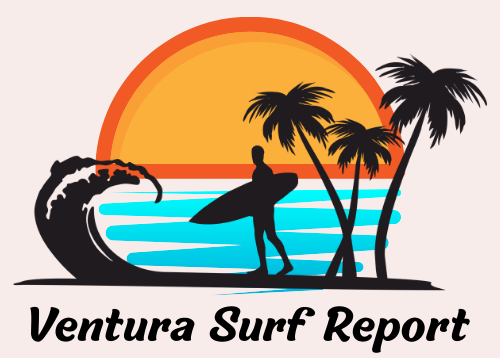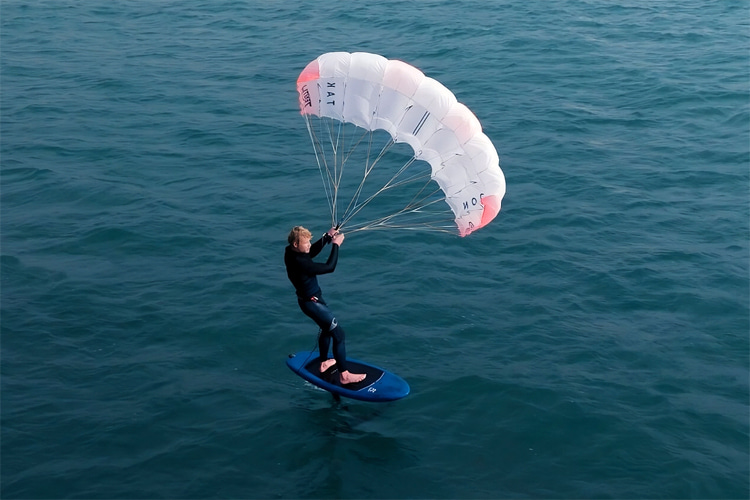
There is a new sports equipment item that is conquering the market. It’s called parawing and promises more freedom to foil enthusiasts.
When kiteboarding hit the water in the early 2000s and became one of the fastest-growing sports on the planet, it opened a new way of harnessing the power of the wind to ride flat waters and waves.
Ten years later, wing rings promised a new level of freedom to those who enjoyed kiting and surfing via foilboards.
The 2020s bring yet another way of exploring boardsports.
A parawing looks like a mix of a small paraglider and a wing foiling wing.
It is designed to catch the wind efficiently and then easily depower when you want to ride a wave.
It couldn’t be more portable, and the whole power/depower process is quite fast. But how does it exactly work?
It’s simple. The wing works by pulling you into the water, giving you extra speed and lift to get on your foilboard.
All you need to do is take it out of a pouch and launch it up in the air before riding upwind and downwind.

Benefits Compared to Traditional Wings
One of the first obvious comparisons is with wingfoiling.
Parawings are similar to the wing rigs we’ve seen powering hydrofoil boards for the first time.
However, they have several advantages over their predecessors.
The first that comes to mind is its effortless upwind power.
Thanks to its minimal design, you can blast upwind with minimal effort, and once you are up on the foilboard, you can easily control the wing to adjust your riding angle.
The parawing’s stronger initial pull is truly impressive, mostly due to the bridled, giving you a head start when you are setting out or need to catch a wave quickly.
The quick and easy stashing is also useful.
When the wind dies down, or you catch a wave, the parawing can be depowered and folded away quickly for smoother transitions from powered riding to wave surfing.
Lastly, it is super user-friendly for all skill levels.
Whether you are new to foil surfing or a seasoned rider, the parawing helps you manage power and control, saving your energy just for riding.

Structure and Key Features
Parawings have a compact and lightweight design. Most of them include several important common features:
- Refined Bridle System: The carefully designed bridle lines keep the canopy smooth and help the wing maintain a clean profile and added responsiveness;
- Color-Coded Controls: The control bar, bridle lines, and the leading edge of the wing are generally color-coded so you can quickly find the right parts and adjust the wing easily;
- Fingertip Bar Control: The control system makes changing the wing’s angle simple. For instance, a slight move brings more power for going upwind or reduces power for cruising downwind;
- Stable Aerodynamics: Features such as leading-edge battens and transverse sail shaping ensure that the parawing remains stable and does not collapse even when pushed hard;
- Compact and Fast-Drying: The parawing folds into a small, lightweight pack that dries quickly, so you can easily carry and deploy it at spots that require a paddle out;
Wind Ranges
The pocket wings are designed to perform across a range of wind conditions.
Here’s an example of the typical wind ranges for different parawing sizes, calculated for an average rider weighing about 80 kilograms (176 pounds):
- 1.9 meters: 20-40 knots;
- 2.4 meters: 17-36 knots;
- 3.0 meters: 15-33 knots;
- 3.6 meters: 14-30 knots;
- 4.3 meters: 13-27 knots;
- 5.0 meters: 12-24 knots;
Keep in mind that the actual wind range may vary depending on the rider’s skill level and the type of board and foil used.
BoardRiding Maui (BRM), Ozone, Naish, Flysurfer, Takoon, and Ensis are some of the world’s leading parawing manufacturers.

Why Foil Surfing Enthusiasts Love Parawings
Parawings open new opportunities in foil surfing.
They let riders effortlessly navigate different conditions, thanks to their easy deployment system and user-friendly controls that work well in various wind and water conditions.
If you’re planning to get far out to sea, this piece of equipment will make it easy to power upwind or ride downwind before depowering the wing for a hands-free ride on the wave.
There are fewer fighting-the-equipment moments.
Also, its simplicity reminds us of trainer kites: you can start practicing on the beach, for example, walking along the shore with the wing until you build enough confidence to launch it in the water.
Need a quick guide to parawing riding? Here we go.
A Simple Beginner’s Guide to Parawing Foiling
Ready to try a parawind on a foilboard? Let’s do it.
1. Get Familiar on the Beach
Walk along the beach or lakeshore with your parawing. Practice holding the control bar and feel how pulling forward powers the wing. Then, notice how tilting the wing back helps it to stall.
2. Prepare for Launch
Sit on your foilboard on calm water. Hold the parawing by its leading edge with one hand and the control bar with the other. Practice throwing the wing into the air, making sure the leading edge does not hit the water.
3. Find Your Balance
You’re doing great. Once the parawing catches the wind, it will stabilize. Transition from a seated position to kneeling and then to standing. Use gentle pumping motions if needed to create extra lift.
4. Control Your Ride
Time to feel the wind’s power. Keep a steady tension on the control bar to maintain power. Use the bar to adjust your angle when riding upwind. When you want to depower, pull the control bar closer to the back lines to stall the wing.
5. Safety Tips
Riding safely should always be your main priority. So, always use a leash attached to your board. Also, make sure to practice deploying and depowering the parawing on dry land first. It’s a wise move. Finally, keep your movements smooth and controlled. And enjoy the ride.
Words by Luís MP | Founder of SurferToday.com


Leave a Reply